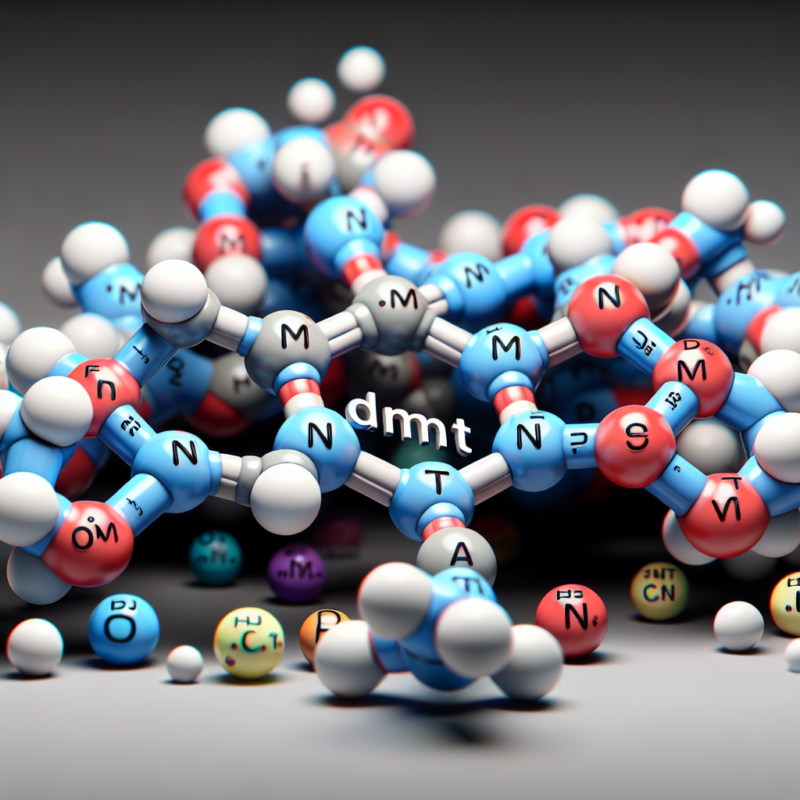Blog
what is dmt?
The Science Behind DMT: Understanding the Effects and Mechanisms

DMT, or dimethyltryptamine, is a powerful psychedelic compound that has been used for centuries in traditional spiritual practices. It is found naturally in certain plants and animals, and can also be synthesized in a laboratory. In recent years, DMT has gained popularity as a recreational drug, but its effects and mechanisms are still not fully understood. DMT is classified as a serotonergic psychedelic, meaning that it affects the serotonin receptors in the brain. Serotonin is a neurotransmitter that plays a role in regulating mood, sleep, and cognition. When DMT binds to these receptors, it disrupts the normal functioning of the brain, leading to altered perceptions and experiences. One of the most notable effects of DMT is its ability to induce intense hallucinations and altered states of consciousness. Users often report seeing vivid and complex visual patterns, colors, and shapes. These hallucinations can be both beautiful and terrifying and can vary greatly from person to person.
Some users also report experiencing a sense of timelessness and a feeling of being connected to a higher power or universal consciousness. The exact mechanism by which DMT produces these effects is still not fully understood. However, research suggests that it may work by increasing the activity of certain brain regions, such as the visual cortex and the prefrontal cortex. These areas are responsible for processing sensory information and regulating emotions, respectively. By altering the activity in these regions, DMT can lead to changes in perception and mood. Another interesting aspect of DMT is its short duration of action. Unlike other psychedelics such as LSD or psilocybin, which can last for several hours, the effects of DMT typically only last for 15-30 minutes. This is due to the rapid breakdown of the compound in the body by enzymes. However, despite its short duration, the intensity of the experience can be overwhelming and can have a profound impact on the user. In addition to its effects on perception and consciousness, DMT has also been studied for its potential therapeutic benefits. Some research suggests that it may have antidepressant and anti-anxiety effects, and could be useful in treating conditions such as depression, PTSD, and addiction. However, more research is needed in this area to fully understand the potential benefits and risks of using DMT as a therapeutic tool. One of the most intriguing aspects of DMT is its role in spiritual and religious practices. It has been used for centuries in traditional Amazonian shamanic rituals, where it is consumed in the form of ayahuasca, a brew made from plants containing DMT.
In these cultures, DMT is believed to facilitate communication with spirits and provide insights into the nature of reality. Some users also report having profound spiritual experiences and feelings of transcendence while under the influence of DMT. Despite its potential benefits, DMT is a powerful substance that should be approached with caution. It is illegal in most countries and can have serious physical and psychological side effects. These can include increased heart rate and blood pressure, nausea, anxiety, and panic attacks. It is also important to note that DMT can interact with certain medications and should not be used by individuals with a history of mental health issues. In conclusion, DMT is a fascinating compound that has been used for centuries for its mind-altering effects. While its mechanisms of action are still not fully understood, research suggests that it works by altering the activity of certain brain regions. Its short duration and intense effects make it a unique substance, but it should be used responsibly and with caution. As research on DMT continues, we may gain a better understanding of its potential therapeutic benefits and its role in spiritual practices.


Pingback: what is dmt meditation - OFFICIAL DMT VAPE